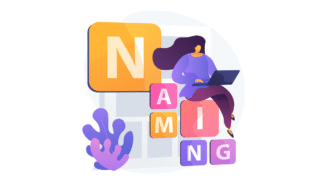LESSON OVERVIEW
The main objectives of this lesson are to:
- engage in talking about multitasking and its impact;
- practise vocabulary to discuss multitasking;
- watch a video on multitasking and our brains.
With this lesson, students try to multitask, watch a video on how multitasking affects the brain and discuss its challenges and effects. They also talk about inattention blindness, share their opinions and work with phrases for talking about multitasking. Students also discuss their experiences and read a text about an unexpected effect of multitasking.
C2 / Proficiency60 minStandard LessonPremium Plan
WARM-UP AND DISCUSSION
This lesson starts with a warm-up. Students try doing an activity where they write ‘I’m good at multitasking’ while counting down from ten to zero at the same time. They then discuss questions about the difficulty and purpose of the activity. Afterwards, students watch a video about multitasking and our brains. Before watching, they discuss why some items (a computer, a spotlight and a zoom lens) might be mentioned in the video. Following that, students watch the first part of the video and write what is mentioned about those items. After that, they discuss whether some statements about multitasking (e.g. Doing two things at once can be dangerous.) are true. Next, students watch the second part of the video and say why the statements are true or false, according to the video.
TALKING ABOUT MULTITASKING
In this part of the lesson, students discuss questions about the impact and role of multitasking and inattention blindness. After that, they read opinions about multitasking. Students say which one they find the most relatable and add details. Next, they match phrases from the previous task (e.g. part and parcel, crank out, chip away at) with their definitions. Following that, students correct mistakes in sentence starters. They then choose four sentences (e.g. I tend to spread myself too thin when…) and complete them with their own ideas. Students also give details. Afterwards, they read a text about an unexpected effect of multitasking and discuss the link between multitasking and creativity. Finally, students get cards with daily multitasking challenges and decisions (e.g. chaotic commute, meeting madness, home hustle). They discuss the situations considering reactions and solutions to them.
HOMEWORK/REVISION
This lesson plan also includes an additional task that you can use as homework or revision. In the task, students complete sentences with their own ideas about multitasking using the target phrases from the lesson. The task is available in the teacher’s version of the worksheet. You can print it and hand it out to your students. It’s also included in the e-lesson plan.
WORKSHEETS
Subscribe to unlock these and many other Standalone lesson with the Premium plan
Subscribe














Great lesson, many thanks
Thank you for your feedback! Happy you liked the lesson 🙂
The first part of the lesson (exs 1 – 6) is great and the video very useful. The reasing and vocabulary exercises in the second part feel a bit disconnected from the rest of the lesson, and didn’t benefit the lesson from my perepsective. Also the final exercise was more about prioritising rather than multitasking. As an addition, the video mentions a famous gorilla exercise. I showed that in class as part of exercise two
Thank you for your feedback! While we strive to make our lessons engaging and ensure that their flow is smooth and coherent, we also recognise that each classroom and learning context may call for certain adjustments to our lesson plans – and that flexibility is entirely up to the teacher.
That said, let me clarify the goal of the vocabulary task in this lesson. After discussing their perspectives on multitasking, students read additional viewpoints and are exposed to useful vocabulary, which they can then use to discuss other aspects of the topic.
As for the final task, we see prioritising and multitasking as closely connected phenomena. Our aim was to prompt students to reflect on this relationship in a meaningful and engaging way.
Good class this one! Students seemed to like it! Thanks!
Thank you for feedback, James! We’re delighted your students enjoyed the lesson 🙂
Thanks for the worksheet!
Regarding ex. 5: “We can switch between tasks and still remain productive. False. When we switch between tasks, we do them less well. [02:02]”.
I don’t think that’s necessarily false, even according to the video. It’s false only when our attention is overloaded. But going back and forth between, say, two tasks is not a big deal, and it’s still possible to do that and remain productive.